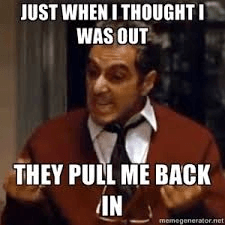Tag: restoration
Course Notes: PRI Integration for Baseball
Another Course in the Books Back in November I had the pleasure of attending a new Baseball PRI affiliate course,…
Course Notes: PRI Vision Integration for the Baseball Player
The first Section Where I Usually Say Something Like Whew or This Was the Best Course Ever! Phoenix has yet…

Course Notes: PRI Impingement and Instability – Cantrell Edition
A Quick Trip Home I made my first trip back to my roots since moving out west to watch Mike Cantrell’s…
Course Notes: PRI Integration for Yoga
Portland is Cool The PRI road show continued on to Portland. This time I learned how PRI integrates with Yoga…
A Fly on the Wall of the Hruska Clinic
The Saga Continues This post is way overdue, but a lot has been going on in life. I have just…
Treatment at the Hruska Clinic: The Finishing Touches
For part 1, click here. For part 2, click here. A Low Key Day 3 Day three consisted mostly of…
Treatment at the Hruska Clinic: PRI Dentistry and Vision
For part 1, click here For part 3, click here Jaws will Drop I’m in the dentist chair, The room…
Treatment at the Hruska Clinic – Initial Evaluation
For part 2, click here. For part 3, click here. “Do you produce enough saliva?” That was the first interview…
Course Notes: PRI Vision Postural Visual Integration
Explosive I am still picking up the white matter that exploded all over the pavement as I left the PRI…
PRI and Pain Science: Yes You Can Do It
Questions You may have noticed that my blogging frequency has been a little slower than the usual, and I would…
Course Notes: PRI Craniocervical Mandibular Restoration
“The Head and Neck Runs The Show.” ~Ron Hruska Hello, my name is Zac Cupples, and I have an addiction.…
Course Notes: PRI Pelvis Restoration
Just recently attended another excellent PRI course taught by Lori Thomsen and new instructor Jesse Ham called Pelvis Restoration. The…
The Year of the Nervous System: 2014 Preview
It’s All Part of the Plan And if you see my course schedule this year, the plan is indeed horrifying.…
Course Notes: Advanced Integration Day 4 – Curvature of the Spine
Today we get wild and crazy and talk about scoliosis and the like; the last day of AI. For day…
Advanced Integration Day 3: Thoracic-Scapula Integration
Day 3 was all thorax and scapula. Here we go! For day 1, click here For day 2, click here A…
